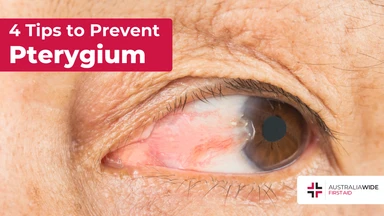Alzheimer's and Dementia: What's the Difference?


1 in 15 Australians aged 65 and above get diagnosed with dementia and 70% of those are diagnosed with Alzheimer’s disease.
Dementia is a broad term that consists of many conditions with various causes. Alzheimer’s disease is one specific condition and is the most common cause of dementia.
Many times, you may have noticed people using the terms dementia and Alzheimer’s interchangeably. However, they do not particularly mean the same thing. The simplest way to understand them is to think of the term dementia as the broad umbrella under which many different illnesses fall under. One such disease which by far is the most common form of dementia is Alzheimer’s disease.
The Australian Institute of Health and Welfare estimated that there are about 400,000 to 459,000 Australians diagnosed with dementia. 70% of those are diagnosed with Alzheimer’s disease. These numbers are expected to increase to between 550,000 and 590,000 by 2030. 1 in 15 Australians aged 65 and above get diagnosed with dementia. Although it is more common in the elderly, people in their 40s and 50s do get dementia too. It is known as younger onset dementia. Being diagnosed with dementia is not a normal phenomenon within the ageing process. In Australia, dementia is the second leading cause of death in 2018. For females, it was the leading cause of death while for males, dementia was the third leading cause of death.
Today, we are going to look at both dementia and Alzheimer’s disease, as well as their differences and similarities. It is important to understand these conditions to be able to take actions and protect yourself from getting it and live life to the fullest.
Dementia is a broad term that is used to describe a group of illnesses that negatively impacts the function of the brain. Some forms of dementia include Alzheimer’s disease, vascular dementia, lewy body disease, alcohol-related dementia, younger-onset dementia and many more. Alzheimer’s disease is a progressive degenerative illness that damages the brain. It is caused by amyloid plaques deposits and neurofibrillary tangles that lead to the death of the brain cells. The amyloid plaques inhibit the brain from sending messages or signals and the neurofibrillary tangles prevent the brain cells from receiving nutrients and energy, resulting in their death. The death of the brain cells causes shrinking of the outer layer of the brain which is the area responsible for memory, language and judgement.

Of Alzheimer's Disease
The symptoms of dementia depend on what the cause of it is because there are many causes of dementia. The early signs of dementia may not be obvious and may take a long time to be noticed. On the other hand, the symptoms of Alzheimer’s disease are more specific. Alzheimer’s disease normally begins slowly and the symptoms get increasingly worse as time goes on. The stages of Alzheimer’s disease progress from mild to moderate to severe.
As Alzheimer’s disease progresses, the symptoms become severe. Symptoms include:
Other symptoms of dementia include:

Since the causes of dementia are not fully known, there is no sure way to prevent dementia. Likewise, for Alzheimer’s disease. Your chances of getting both dementia and Alzheimer’s disease are influenced by:
There is no cure for dementia and Alzheimer’s though the most commonly used treatment for them are medications that treat their symptoms and slow down their progress. Medicines can help with the following symptoms:
Since dementia and Alzheimer’s are irreversible illnesses, the best way would be to prevent it early by taking care of your heart, body and mind. With the increasing number of the elderly being diagnosed with dementia, it is essential for every healthcare professional to have knowledge of providing first aid.
Learn First Aid with Australia Wide First Aid. Book a date today!

May 1, 2025
Pterygium, also known as surfer's eye, is an ocular surface disease characterised by a growth of limbal and conjunctival tissue over the cornea. Fortunately, you can practice many eye health habits to help prevent the development of pterygium and other risks.

April 3, 2025
Tuberculosis is a severe bacterial infection that mainly affects the lungs and other parts of the body, including the nervous system. This contagious disease can quickly spread in crowded areas when an infected person coughs, talks, or sneezes.

February 13, 2025
Melioidosis is a bacterial infection caused by Burkholderia pseudomallei, a microorganism found in soil and water. This infection is often underdiagnosed due to symptoms mimicking many other illnesses. As such, awareness is critical for those living or working in affected regions.